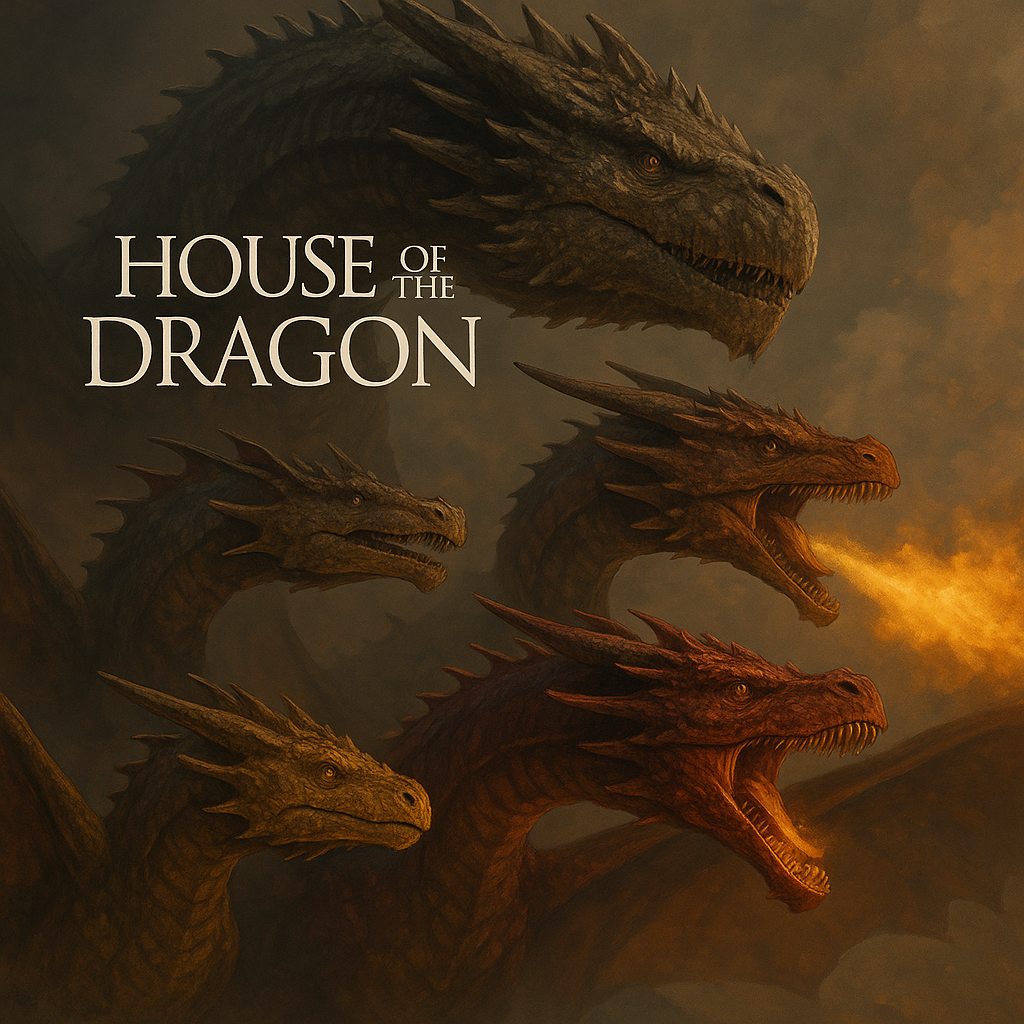
Introduction
House of the Dragon, the Game of Thrones prequel series, lives up to its name by placing dragons at the very center of the story. From Syrax’s majestic entrance to the ancient and terrifying Vhagar, and with many more dragons on the horizon, this article offers an in-depth exploration of the dragons already seen and those yet to come in the Targaryen saga.
1. The dragons’ essential role in House of the Dragon
1.1 Dragons as weapons of war
In season two, aerial dragon battles have become central to the narrative: fiery duels, military strategy, and psychological warfare. The episode “The Red Dragon and the Gold” showcases a breathtaking dragon-on-dragon sequence, with stunning VFX and tactical implications that change the tide of the war.
1.2 Symbols of Targaryen legitimacy
Dragons are not just beasts—they’re emblems of Targaryen rule. Whoever controls the dragons controls Westeros. Rhaenyra’s growing dominance is closely tied to the number of dragons under her banner, especially after her bastards begin riding their own mounts in a pivotal moment of the “Red Seeding”.
2. Anatomy and dragon design in HOTD
2.1 Three distinct dragon morphologies
According to co-showrunner Miguel Sapochnik, the dragons are designed with three types in mind: canine, equine, and dinosaur-like. These shapes influence how each dragon moves, fights, and interacts, creating unique personalities and combat styles for every creature.
2.2 Aging and physical limits
Dragons in Westeros grow throughout their lives. But with size comes vulnerability: bones become brittle, legs collapse under massive weight, and some dragons become too large to fly effectively. Vhagar is the perfect example—more like a lumbering warship than a nimble predator.
2.3 Wild vs. bonded dragons
Not all dragons are ridden. The show introduces wild, riderless dragons still roaming Westeros. Taming requires Valyrian commands, childhood bonding, and discipline. The dragon-rider relationship is depicted with a realism that adds emotional depth to their connection.
3. Stunning dragon visuals and design choices
3.1 High-end CGI and practical elements
HOTD pushes visual boundaries by combining CGI with real props, including saddles, riding rigs, and firelight simulations. Over 20 saddle models were used for season two alone, contributing to a highly immersive fantasy environment.
3.2 Individualized personalities and appearances
Each dragon features its own color palette, body structure, and behavior. From Caraxes’ snake-like agility to Syrax’s regal posture, this diversity helps viewers emotionally invest in each creature as more than just a tool of war.
4. The draconic bond: language and emotion
4.1 High Valyrian as a bonding language
Commands like “Dracarys” aren’t just magic words—they’re a bridge between human and dragon. High Valyrian is used exclusively to give orders, reinforcing the ancient cultural bond passed down through Targaryen generations.
4.2 Sensory intimacy
Actors are coached to “feel” the dragon’s presence—heat, wind, scent—even during CGI scenes. This approach creates a powerful emotional realism in rider-dragon scenes, making them feel authentic despite the digital effects.
5. Dragons yet to appear
5.1 The wild ones waiting
Several wild dragons, referenced in George R. R. Martin’s lore, have yet to debut. Hints and concept art suggest we’ll see more untamed, unpredictable dragons in upcoming seasons.
5.2 Rhaenyra’s reinforcements
Rhaenyra’s forces are bolstered by several new dragons (Seasmoke, Vermithor, Silverwing…), offering both military strength and symbolic legitimacy in her claim to the Iron Throne.
5.3 Narrative impact of dragon growth
As dragons continue to age, grow, and evolve, their increasing fragility will become a strategic concern. A dragon too large to fly or land safely could tip battles in unexpected ways—adding layers of tactical tension to future conflicts.
6. Narrative and symbolic layers
6.1 Weapons of terror and diplomacy
Dragons aren’t just fire-breathing beasts—they’re living weapons of mass destruction and political tools. Their mere presence can force cities to surrender or vassals to swear fealty.
6.2 Tradition versus disruption
As new riders bond with dragons—some outside the traditional Targaryen bloodline—the question of who “deserves” to ride a dragon emerges. This shift could challenge old power structures and redefine the Targaryen legacy.
6.3 The end of an era?
With Vhagar’s inevitable death and no new dragons being hatched, the series may be foreshadowing the eventual decline of draconic dominance in Westeros. The “end of dragons” is not just a prophecy—it’s a ticking clock woven into the plot.
Conclusion
The dragons of House of the Dragon are more than eye candy—they are cultural, political, emotional, and biological keystones of the narrative. From their anatomy and growth patterns to their relationships with riders and impact on warfare, each aspect is deeply considered. As new dragons rise and old ones fall, the skies of Westeros will continue to burn—and captivate.
Sources
-
Entertainment Weekly (EW) – House of the Dragon dragon guide
ew.com -
ScreenHub – Episode analysis: “The Red Dragon and the Gold”
screenhub.blog -
Decider – Team Black’s dragons explained (Seasmoke, Vermithor, Silverwing…)
decider.com -
Medium – Erin Underwood – Lessons from Game of Thrones and House of the Dragon
medium.com